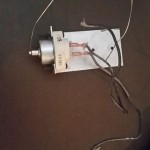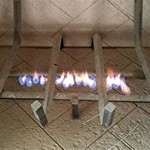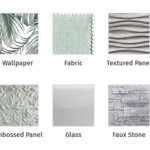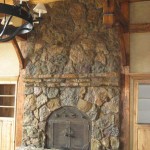Security Best Practices for Traditional Fireplaces
Traditional fireplaces, while aesthetically pleasing and providing a source of supplemental heat, present inherent fire hazards. Mitigating these risks requires a comprehensive approach to safety, encompassing installation, maintenance, and operational practices. This article outlines key security best practices designed to minimize the potential for fire-related incidents associated with traditional fireplaces.
Chimney Inspection and Maintenance
The chimney is a critical component of a traditional fireplace system. Its primary function is to safely vent combustion byproducts, including smoke, gases, and particulate matter, away from the living space. A compromised chimney can lead to a range of problems, from reduced draft to carbon monoxide poisoning and chimney fires.
Regular inspections by qualified professionals are paramount. These inspections should occur at least annually, and more frequently if the fireplace is used extensively. A certified chimney sweep can assess the structural integrity of the chimney, identify potential hazards such as cracks, spalling (brick deterioration), or obstructions, and recommend necessary repairs. The sweep will also remove creosote buildup, a highly flammable substance that accumulates as wood burns.
Creosote is formed when unburned wood particles and volatile gases condense in the chimney. The type of wood burned, the fireplace's design, and the burning habits all influence the rate of creosote accumulation. Burning unseasoned wood, for example, produces more smoke and thus increases creosote buildup. A thick layer of creosote significantly increases the risk of a chimney fire, which can spread rapidly to the surrounding structure.
Chimney cleaning involves removing creosote deposits using specialized brushes and tools. The frequency of cleaning depends on the amount of fireplace usage and the type of wood burned. For heavy users and those burning softwood, more frequent cleaning is necessary. Adhering to a regular cleaning schedule is a vital safety measure.
Beyond creosote removal, other maintenance tasks include repairing cracks in the chimney liner, replacing damaged bricks, and ensuring the chimney cap is in good condition. The chimney cap prevents rain, snow, and debris from entering the chimney, protecting it from water damage and preventing obstructions.
Safe Burning Practices
The manner in which a fireplace is used directly influences its safety. Implementing and adhering to safe burning practices minimizes the risk of both immediate fire hazards and long-term damage to the fireplace system.
The first, and perhaps most critical, practice involves burning only seasoned firewood. Seasoned wood, which has been properly dried for at least six months, contains a significantly lower moisture content than green wood. This lower moisture content results in a hotter, cleaner burn with less smoke and creosote production. Unseasoned wood, on the other hand, burns inefficiently, generating excessive smoke and contributing to creosote buildup.
Wood should be stored in a dry, well-ventilated area away from the house. Covering the woodpile with a tarp can help protect it from rain and snow. Bringing wood indoors a day or two before burning allows it to dry further, improving its combustion. Never store large quantities of wood directly next to the fireplace, as this creates a significant fire hazard.
The type of wood burned also matters. Hardwoods, such as oak, maple, and ash, burn longer and produce more heat than softwoods, such as pine and fir. However, softwoods tend to produce more creosote. A mix of hardwoods and softwoods can be used, but it is important to monitor creosote buildup closely when burning softwoods.
Never burn trash, paper, or cardboard in a fireplace. These materials burn rapidly and intensely, creating a dangerous fire hazard and releasing harmful pollutants into the air. Plastics and chemically treated wood should also be avoided, as they can release toxic fumes. Using a fireplace screen is essential to prevent sparks and embers from escaping into the room. The screen should be made of sturdy metal mesh and should completely cover the fireplace opening. Ensure the screen is properly positioned before lighting a fire and that it remains in place throughout the burning process.
Avoid overloading the fireplace with wood. A fire that is too large can overheat the chimney and increase the risk of a chimney fire. Start with a small fire and gradually add more wood as needed. Never leave a fire unattended. Before leaving the house or going to bed, ensure the fire is completely extinguished. Allow the ashes to cool completely before disposing of them in a metal container with a tight-fitting lid. The container should be placed away from combustible materials.
Fireplace Surroundings and Safety Equipment
The immediate surroundings of the fireplace play a crucial role in preventing fire-related accidents. Maintaining a safe zone around the fireplace and ensuring the availability of essential safety equipment are vital components of a comprehensive fire safety plan.
Combustible materials, such as furniture, curtains, rugs, and newspapers, should be kept at least three feet away from the fireplace opening. This buffer zone reduces the risk of these materials igniting if sparks or embers escape. Regularly inspect the area around the fireplace for any potential fire hazards and remove them promptly.
A readily accessible fire extinguisher, rated for Class A fires (fires involving ordinary combustibles such as wood and paper), is an indispensable safety tool. Ensure that all household members know where the fire extinguisher is located and how to use it properly. Regularly inspect the fire extinguisher to ensure it is fully charged and in good working condition. Consider having a professional fire safety company inspect and service the fire extinguisher annually.
Smoke detectors are essential for early fire detection. Install smoke detectors on every level of the home, including near the fireplace. Test the smoke detectors monthly to ensure they are functioning correctly and replace the batteries at least once a year, or as recommended by the manufacturer. It is also advisable to install a carbon monoxide detector near the fireplace. Carbon monoxide is a colorless, odorless gas that can be produced by incomplete combustion. Carbon monoxide poisoning is a serious health hazard, and a carbon monoxide detector can provide an early warning of dangerous levels of the gas.
Develop and practice a fire escape plan with all household members. The plan should include multiple escape routes and a designated meeting point outside the home. Conduct regular fire drills to ensure everyone knows what to do in the event of a fire. Consider keeping a fire blanket near the fireplace for quickly extinguishing small fires.
Finally, consider installing a fireplace door. Fireplace doors help contain sparks and embers, improve the fireplace's efficiency, and reduce drafts. Choose a fireplace door that is made of heat-resistant glass and fits properly into the fireplace opening. Ensure the door is properly installed and maintained.
By implementing these security best practices, homeowners can significantly reduce the risk of fire-related incidents associated with traditional fireplaces, ensuring a safer and more enjoyable experience.

Bis Tradition

Bis Tradition The Fireplace King Huntsville Ontario Muskoka For Your Heating Cooling And Grilling Needs

Bis 1 2 Air Wash Deflector 7b26a213 Friendlyfires Ca

Bis Tradition The Fireplace King Huntsville Ontario Muskoka For Your Heating Cooling And Grilling Needs

Bis Ultima The Fireplace King Huntsville Ontario Muskoka For Your Heating Cooling And Grilling Needs

Bis Ultra The Fireplace King Huntsville Ontario Muskoka For Your Heating Cooling And Grilling Needs

Bis Ultima

Wood Burning Fireplace Bis Tradition Bistradition The Cozy Cabin Lennox Hearth Parts

Bis Nova The Fireplace King Huntsville Ontario Muskoka For Your Heating Cooling And Grilling Needs

Bis Tradition Lennox Montecito Estate Fire Screen Btzn Friendly Fires
Related Posts








